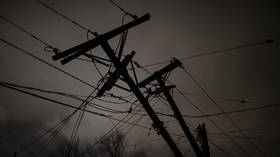American utilities are getting pummeled by unpaid bills

With millions of Americans struggling to pay utility bills, energy companies are facing a looming revenue crisis.
Since the onset of the pandemic, millions of Americans have been struggling with paying rent and utility bills, putting a strain on power utilities' revenues and raising the question about who and when will foot the bill for the billions of US dollars in energy bills arrearages. More than half of US states introduced moratoriums on electricity and gas utility shutoffs in March 2020 due to the Covid-19 emergency as millions of Americans lost their jobs as a result of the pandemic impact on businesses and the economy. Those moratoriums eased households' fears that they would be left without lighting or heating while also struggling to pay rent or put food on their tables. Winter and Covid-19 utility shut-off moratoriums are set to end in 28 states between February and March 2021, according to the National Energy Assistance Directors Association (NEADA).
At the same time, home energy use data provider Sense found that during the lockdowns and stay-at-home orders in the spring of 2020, the average home electrical usage increased by 22 percent compared to 2019, and most consumers would have to pay 22 percent more on their April electricity bill compared to April 2019.
For utilities, the higher household bills would have offset lower industrial use of electricity if many customers had not fallen behind in their energy bills payments.
Duke Energy, for example, has estimated that the lower Covid load would dent its 2020 earnings per share by around $0.20 to $0.25.
Also on rt.com That’s OUR money! Dozen US states go to Supreme Court fighting over who gets to tax residents stuck working from home"And when coupled with waived fees and non-deferred Covid costs results in Covid related earnings headwinds of $0.25 to $0.35 in 2020," Steven Young, Duke Energy's executive vice president and chief financial officer, said on the Q3 earnings call in November.
Utilities have waived fees and stopped shutoffs, but those billions of dollars of unpaid energy bills still must be paid one way or another. Meanwhile, debts continue to pile up.
"A moratorium just kicks the can down the road. By the time the pandemic is over, these families may have a year's worth of utility bills," NEADA's executive director Mark Wolfe told Utility Dive in December.
According to an analysis by Moody's Analytics, as of the January 2021 rent payment, "the typical delinquent renter" would have been "almost four months and $5,600 behind on their monthly rent and utilities," of which $290 is utilities.
"Utilities across the nation are reporting significant increases in the numbers of households falling behind on their utility bills," NEADA and other organizations, including the National Association of Regulatory Utility Commissioners and the National Consumer Law Center, wrote in a letter to Congress at the end of January, requesting an additional $10 billion funding for the Low Income Home Energy Assistance Program (LIHEAP).
Also on rt.com Covid lockdowns leave one third of US small businesses (& almost HALF minority-owned businesses) unable to pay rentElectric and natural gas arrearages are expected to have reached $32 billion by the end of 2020, based on an analysis of utility arrearages by NEADA.
The Consolidated Appropriations Act of 2021 provided $25 billion for rent relief and utility bills. However, NEADA and the other organizations do not expect a significant portion of these funds to be used for utility bills, while those funds can only help renters, not homeowners, millions of whom are also behind in their energy bills.
More funding to LIHEAP would be a better choice than other options such as repayment plans, which could take years to repay and further delay households' ability to recover, or utilities raising rates to all customers, according to NEADA. Moreover, the unpaid energy bills could result in many smaller, less well-capitalized municipal and cooperative utilities facing "serious economic shortfalls," the organizations said.
"Given the urgency of these needs, it is imperative that Congress include LIHEAP in the next funding bill for coronavirus relief and fund the program at $10 billion to address the emergency heating and cooling needs of all eligible American families," they noted.
This article was originally published on Oilprice.com














